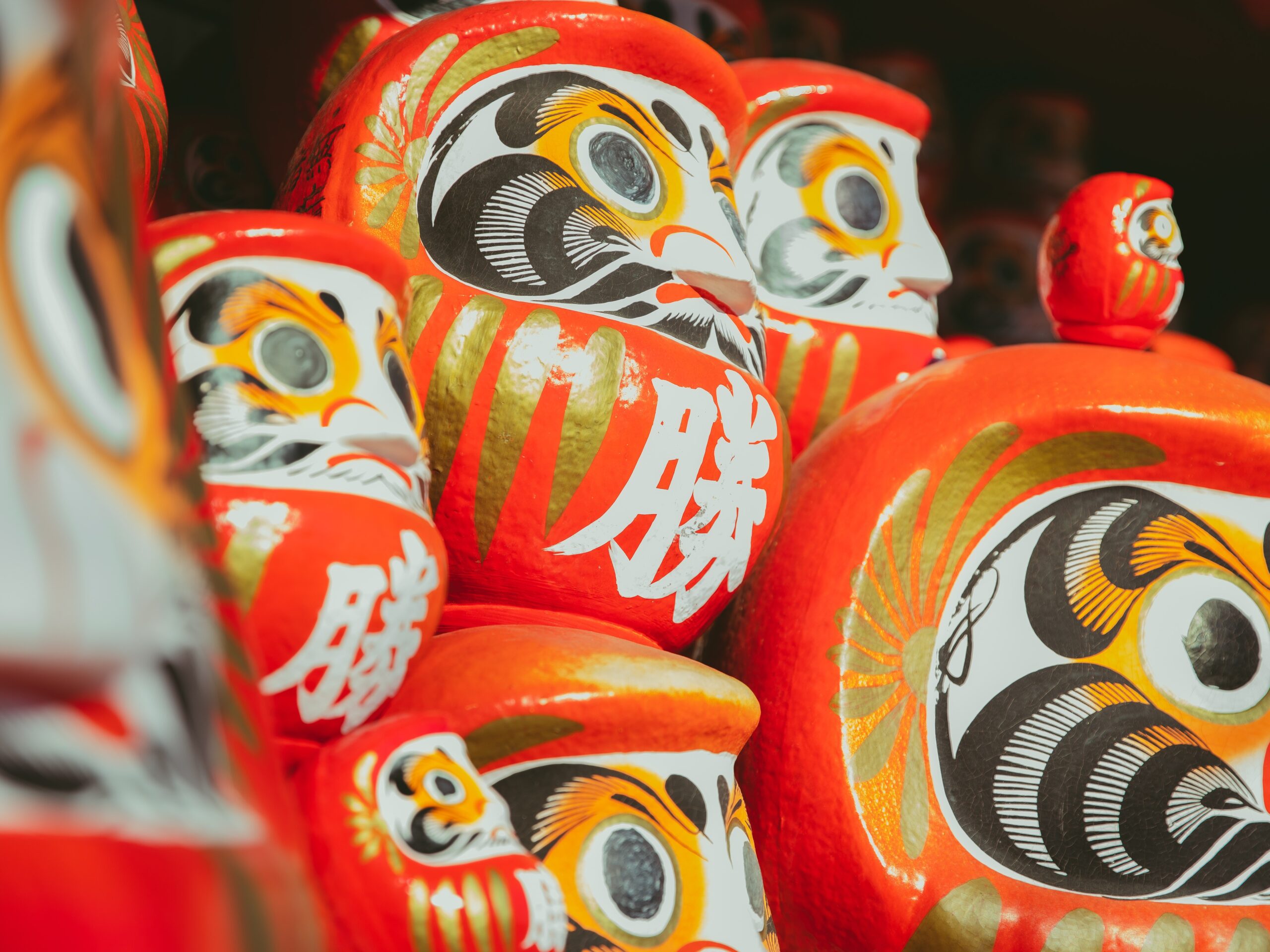Konnichiwa! Japanese culture is filled with a deep sense of spirituality and symbolism, and this is evident in the many good luck charms that are used throughout the country. These charms are believed to bring good luck and protection to their owners. They are often given as gifts, kept in homes or carried on one’s person for good fortune.
History of Japanese Good Luck Charms
The practice of using good luck charms in Japan dates back to the Heian period (794-1185). During this time, people would often carry small objects with them as a way of warding off evil spirits and bringing good fortune. These objects were typically made of paper or cloth and were decorated with symbols or images that represented good luck or protection.
Over time, the practice of carrying good luck charms evolved, and they began to take on a more formalized structure. In the Edo period (1603-1868), temples and shrines began producing omamori, which were small amulets that were blessed by priests and believed to have spiritual power.
In modern times, good luck charms continue to be an important part of Japanese culture. Many people carry omamori or other charms with them as a way of seeking protection, good fortune, or success in specific areas of their lives. Good luck charms are sold at temples, shrines, and specialty shops throughout Japan, and are also commonly given as gifts to friends and family members.

Planning a trip to Japan?
Types of Japanese Good Luck Charms
There are a wide variety of Japanese good luck charms, each with its unique meaning and purpose. Here are some of the most common:
Omamori are small, cloth amulets that are often sold at temples and shrines throughout Japan. They are typically made of silk or cotton and are decorated with various symbols or images. Each omamori is believed to have a specific purpose, such as protection during travel or good luck in business.
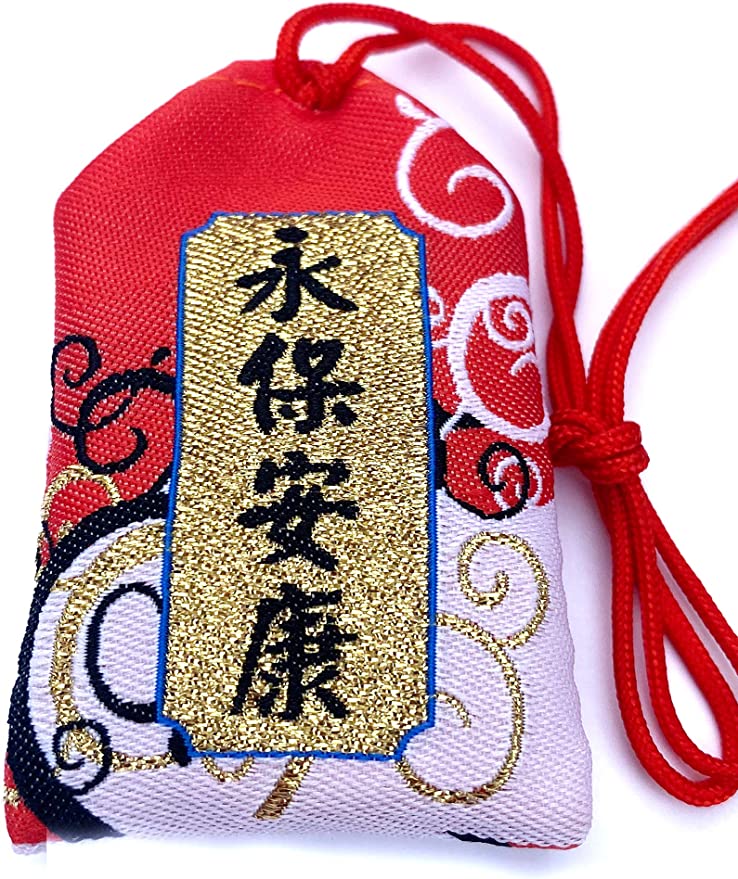
Daruma dolls are small, round figurines that are often made of papier-mâché or ceramic. They are modeled after Bodhidharma, a Buddhist monk who is credited with founding the Zen tradition. The dolls are often sold with blank eyes, and it is customary to paint one eye when making a wish or setting a goal. The other eye is painted when the wish or goal is achieved. If you are interested in other Japanese dolls, check out our article on Ningyo Dolls.
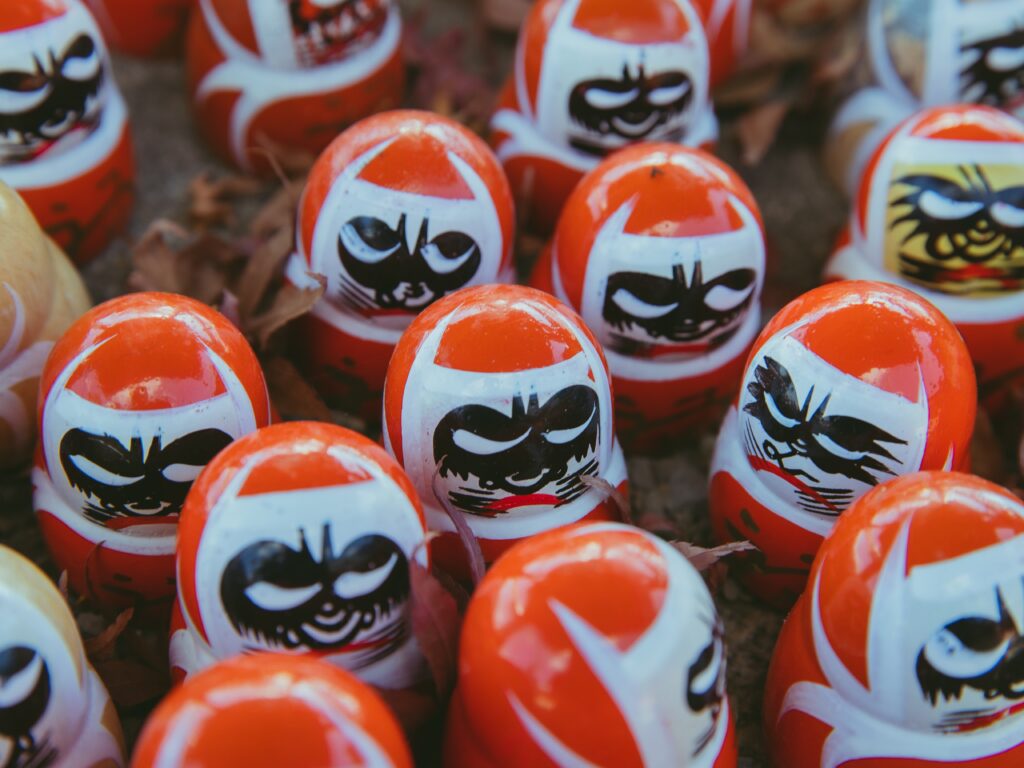
Maneki-Neko, also known as the “beckoning cat,” is a popular talisman in Japan. It is often depicted as a ceramic or plastic figurine of a cat with one or both paws raised. The maneki-neko is believed to bring good luck and fortune to its owner, especially in matters of business.
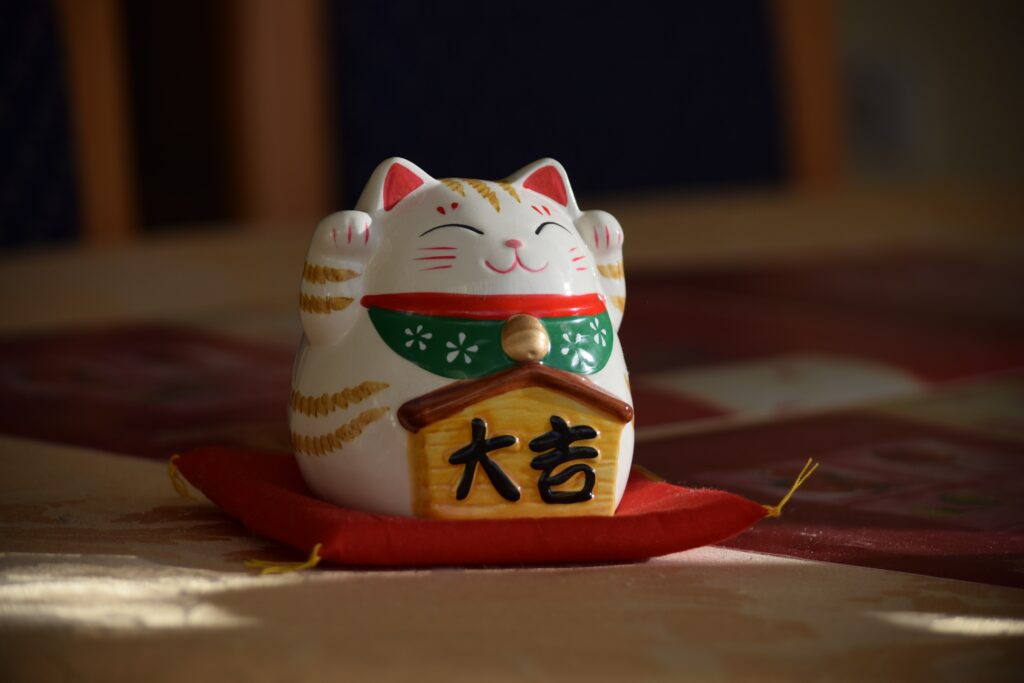
Ema are small wooden plaques that are often found at shrines throughout Japan. They are used as a way of making a wish or prayer, and are typically decorated with images or symbols that are believed to bring good luck.
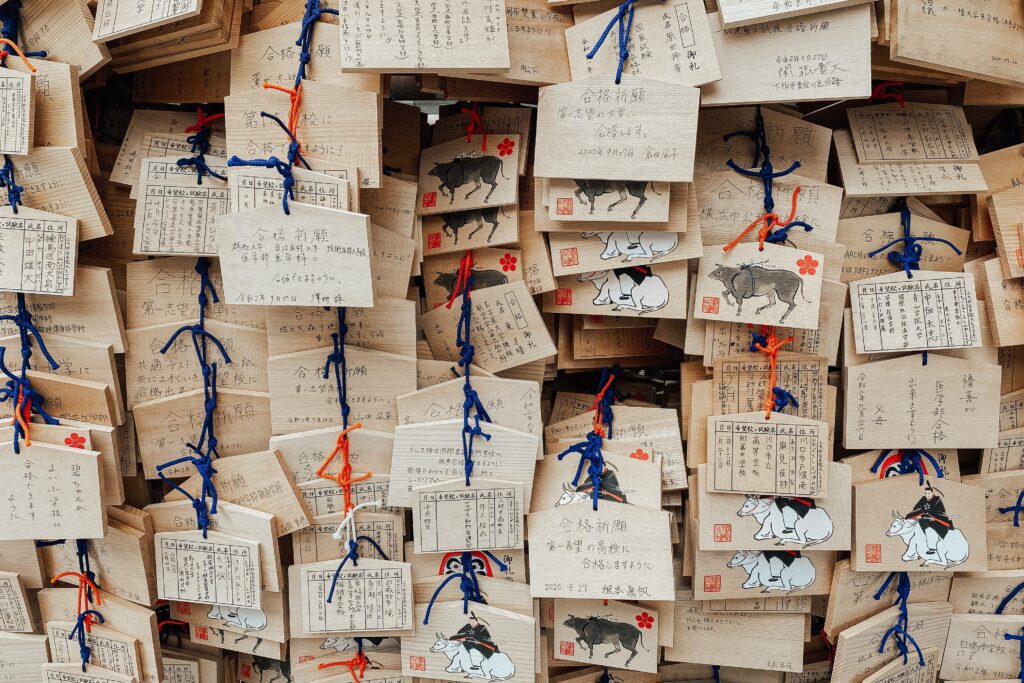
How Japanese Good Luck Charms are Used
Japanese good luck charms are often used in a variety of ways. Here are some examples:
Many people in Japan carry omamori or other good luck charms on their person, either in their pockets or on their keychains. They believe that doing so will bring them good fortune and protection throughout the day.
Good luck charms are often placed in homes as a way of bringing good fortune to the entire household. Omamori or other talismans may be hung near doorways or placed on household altars.
Japanese good luck charms are often given as gifts to family and friends, especially during times of celebration or transition. For example, an omamori may be given to a friend who is starting a new job, or a daruma doll may be gifted to a loved one who is embarking on a new endeavor.
Many people visit shrines in Japan to pray for good fortune or to make a wish. Ema plaques are often used for this purpose, as people write their wishes or prayers on them before hanging them up at the shrine.
In addition to these common uses, there are also some customs and superstitions surrounding good luck charms in Japan. For example, it is believed that omamori should not be opened, as doing so will cause the good luck to escape. Instead, they should be replaced with new ones once a year.
Summary
Japanese good luck charms are an important part of the country’s spiritual and cultural heritage. From omamori to daruma dolls, these talismans are believed to bring good fortune and protection to their owners. Whether carried on one’s person or placed in the home, they are a powerful symbol of the deep connection that many people in Japan have to the spiritual world.
As with any tradition, the use of Japanese good luck charms has evolved over time, but their significance remains as strong as ever. By understanding their history and meaning, we can gain a deeper appreciation for the cultural and spiritual values that they represent.

